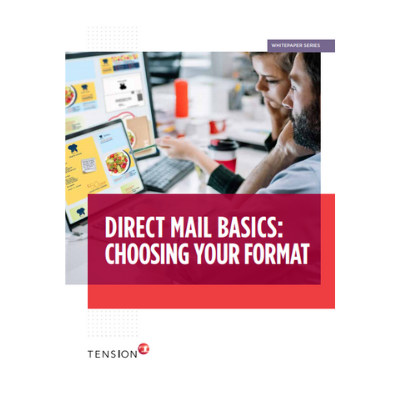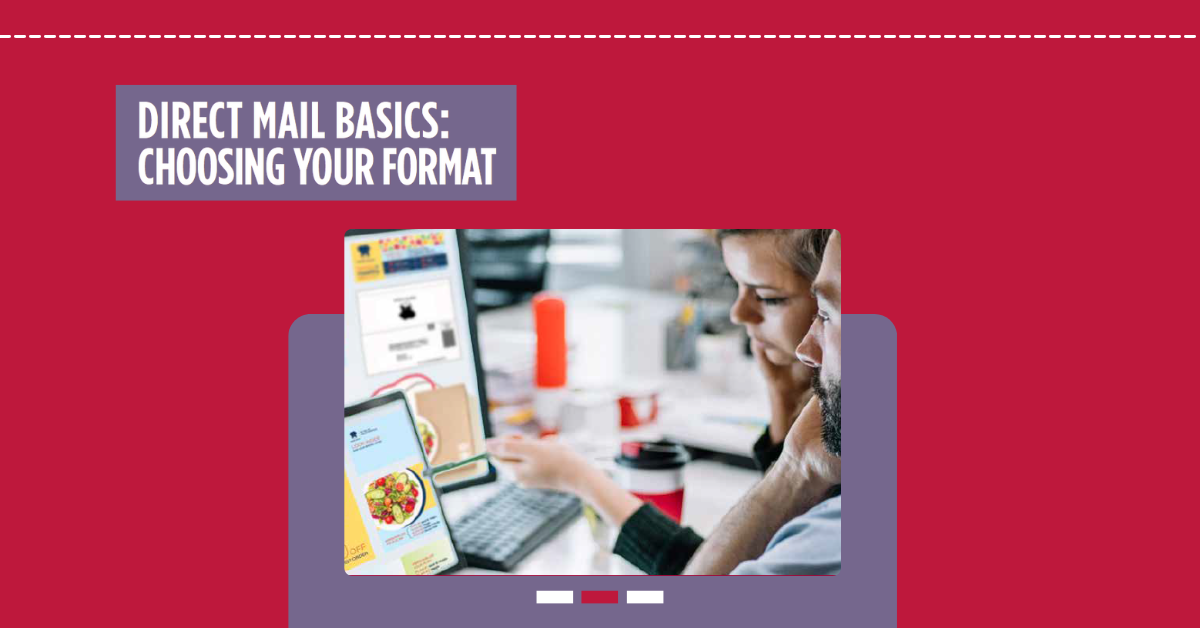We know from direct mail’s 40-40-20 rule that the success (or failure) of a direct mail campaign is based 40% on making the right offer, 40% on targeting the right audience, and 20% on your creative. An eye-catching design can keep your mailpiece in the prospect’s hands and out of the recycling bin, and therefore increase the likelihood that your offer will be acted upon.
When designing your mailpiece, you will have to choose its format. Selecting a direct mail format is a strategic decision based on your marketing objective, audience, offer and budget.
Traditional Envelope with Inserts
Envelope mailings are also called solo inserted mailings, classic direct mail packages or envelope packages. An envelope package can carry as many components as needed to deliver your message and achieve your marketing objectives – as long as it meets postal guidelines.
A classic solo mailing typically includes:
- An outer envelope (carrier envelope), frequently a number 10 or a 6×9
- Letter, also called a “form” or “form letter”
- Brochure
- Optional lift note
- Reply vehicle
- Other inserts like a buckslip
It’s often called a solo package because it focuses the reader’s attention on a single (solo) product or service, or a group of similar products.
Other Mail Formats
Postcards: Postcards also referred to as simple self-mailers or flats, are popular – they may cost less to produce and send. Self-mailers are frequently used for simple offers and notifications because of their lower perceived value. They can be highly scannable and easy to read.
Expanded Self-Mailers: An expanded self-mailer does not use an envelope. It is a self-contained piece of mail folded so that it is envelope size, which opens to become a brochure or letter.
Catalog: A catalog is a multi-page format with bound pages. It originally generated direct-by-mail orders, but today the catalog is primarily a traffic generator for stores and websites. Even though the format is expensive to produce, its content and heft give it staying power. While solo response rates normally peak in weeks, a catalog may be used as a buying reference for months, even years.
Multi-Mailer: Multi-mailers are unbound catalogs with multiple product inserts mailed in an envelope. Because the inserts are unbound, marketers can cost-effectively test prices and products. However, because multi-mailers are sent as a stack of loose sheets, they don’t have the same staying power as a catalog and response peaks quickly.
Tension’s Peel and Reveal: This is a mailpiece that features an interactive device to engage mail recipients. At first glance, it looks to be a standard self-mailer or postcard. The difference is its unparalleled “wow” factor: a tab prompts the recipient to peel back a thin layer of adhesive paper to reveal a second message on the front side about your company and products.
Download Our White Paper

Click here or the image to the right to download Tension’s white paper, “Direct Mail Basics: Choosing Your Format” to learn more about how to choose the right format for your direct mail campaign.
Contact Tension
The experts at Tension are well-versed in how to best manage your envelope print project to achieve your business goals. Contact us today to get started.




